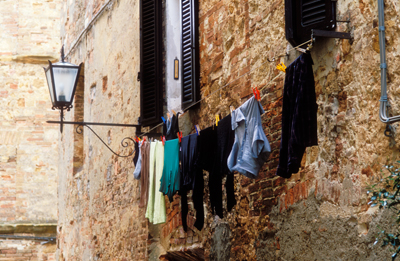Most cities are mixtures of old and new, wealth and poverty, tradition and modernity, and beauty and ugliness. They are also cultural melting pots and home to people of every race, colour, creed and background. Cities would not be cities without people. They were built by people, and for people, and are filled to capacity with people. Certainly visit the major sights, take in the big views and wonder at the monuments and palaces, but don’t then think you have finished. To feel the pulse of a city it is essential to get much closer to the reality of its streets – good, bad and indifferent.
 The first rule for exploring any city, except perhaps Brasilia, is to do most of the work on foot. A quick orientation tour on a bus is one way to make a start. List the areas to which you would like to return, and note the direction of the light falling on anything you want to photograph. Decide your priorities and shooting sequence in a convenient street cafe, and then set of on foot. Markets, open spaces, harbours, parks and ordinary streets are filled with people engaged in all sorts of activities. It won’t be long before contact is made with everyday life.
The first rule for exploring any city, except perhaps Brasilia, is to do most of the work on foot. A quick orientation tour on a bus is one way to make a start. List the areas to which you would like to return, and note the direction of the light falling on anything you want to photograph. Decide your priorities and shooting sequence in a convenient street cafe, and then set of on foot. Markets, open spaces, harbours, parks and ordinary streets are filled with people engaged in all sorts of activities. It won’t be long before contact is made with everyday life.
Approaching people with a view to photographing them or their activities is something that must be undertaken sensitively, but in your own way. It is just a matter of having the confidence to make the first approach. Most people are pleased to exchange smiles or a few words, and happy to respond to your interest in whatever they are doing. Don’t barge in with flashes blazing and expect to be welcomed with open arms, and don’t take too much of anyone’s time. Smile, show you are human and get a feel for whether your presence is welcomed. If it isn’t, then move on.
In some parts of the world life is lived to a large extent on the streets. For example, in an Indian city you never know what is around the next corner. You might see a painted elephant, wandering cows, rickshaw gridlock or a man having a tooth extracted. This is a wonderful environment for a travel photographer. Look for things that are normal, colourful, excessive or extraordinary. Look also for contrasts, contradictions and things that give the city its character. Try to capture each one of them in a single image.
It is generally better not to advertise your status as a travel photographer more than is absolutely necessary. Camera bags and street maps are obvious labels, so leave non-essential items at your accommodation. Carry just an autoexposure camera equipped with a wide-angle lens, and perhaps a second lens, and keep maps and guidebooks out of sight whenever possible. A camera must be ready to use, so leave it turned on and appropriately set. If necessary conceal it under a coat or inside a plastic shopping bag bearing a local company name. In the worst crime-ridden areas use a length of small-link steel chain to attach it to a belt worn under clothing.






